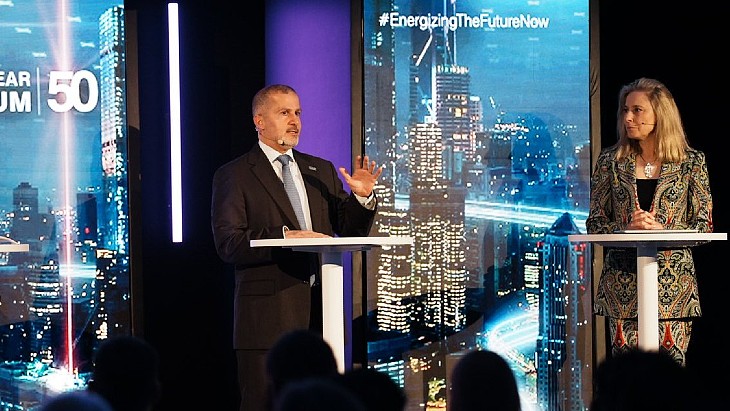Tests using mildly acidic solutions have shown greatly increased recovery, with solution grades of 295 mg per litre U3O8. This is over 10 times higher than the 22 mg per litre achieved in actual alkaline operations. Transforming to a so-called "low pH recovery system" could also position the company to respond rapidly when uranium markets improve, Peninsula said. Based on its studies, the company has concluded that the project's performance under the current alkaline lixiviant process is unlikely to achieve the production rates and unit costs needed for sustainable long-term commercial success "at anything other than substantially increased uranium prices", it said.
The success of the acidic, as opposed to alkaline, lixiviant is due to several key variations between the Lance trend mineral deposit and other roll-front type deposits in Wyoming's Powder River Basin. Unlike other Wyoming deposits, Lance's mineralisation is set in Cretaceous, rather than Tertiary-aged sediments. This is similar to the majority of uranium deposits mined in Kazakhstan, where lower pH leach solutions are used to recover the mineral.
Regulatory approval
Peninsula said it has begun the process to amend the project's permits and licences to enable the new process to be used. It said it has held "positive initial discussions" with the relevant regulatory bodies regarding a change from an alkaline-based mining solution to a low pH solution, and holds a "reasonable expectation" that amendments to existing operating permits and licences could be granted within the next 18-24 months. Although no operating ISL operations within the USA currently use low pH solutions, such solutions have been authorised for use in the country for copper extraction projects and have previously been used in uranium ISL trials and commercial operations in Wyoming.
The laboratory studies also indicate that the quality of affected groundwater can be successfully returned to pre-operational conditions after the use of lower pH solutions, consistent with the project's current regulatory requirements.
The transformation is not expected to require substantial changes to the current processing plant or other infrastructure, with only minor modifications needed for the transition to low pH operations, the company said. In the meantime, operations will continue at the project using the alkaline solution.
Peninsula Managing Director and CEO Wayne Heili described the development as a "game-changing process development" that could place Lance "side by side" with world-leading uranium ISL production facilities from a performance and cost perspective.
Operations commenced at Lance's Ross Permit Area in December 2015. Perth, Western Australia-based Peninsula made its first delivery of uranium under its wholly-owned subsidiary Strata Energy Inc's 2011 sale and purchase agreement with an unnamed US utility in January 2016. Lance produced 34,500 pounds U3O8 (13.3 tU) during the third quarter of 2017, results the company said represented consistent improvement over recent quarters but which still remain below internal target levels.
Researched and written
by World Nuclear News




_18570.jpg)
_16159.jpg)
_18938.jpg)
_33584.jpg)





